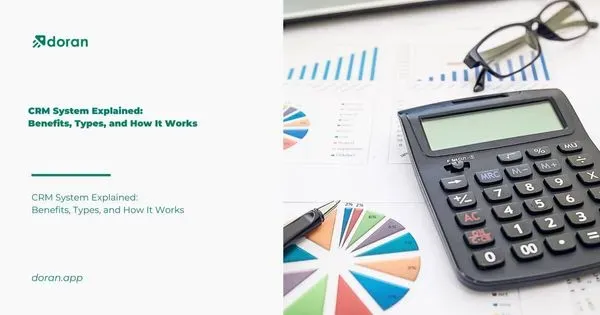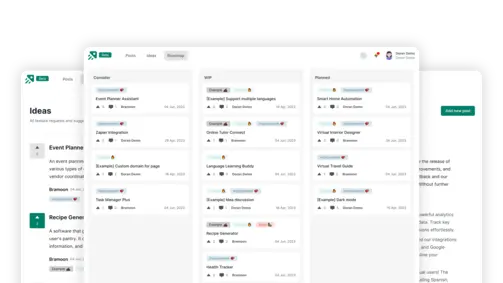Roadmap Business Plan Excellence: Strategic Navigation
Create changelog and product roadmap for your product
Explore nowTable of contents 6 min
In the dynamic landscape of business strategy, a roadmap business plan is a powerful alliance that sets the course for success. This article delves into the details of a roadmap business plan, elucidating how this strategic tool can work to guide organizations toward their goals. Whether you’re an entrepreneur, a business leader, or a strategic planner, understanding a roadmap business plan is key to unlocking a roadmap for success.
A Roadmap Business Plan: What is It?

A roadmap business plan is a strategy that outlines how various corporate operations will contribute to the accomplishment of strategic objectives. Managers, executives, and those in charge of certain departments must understand all company operations.
A roadmap for a business plan must be created to evaluate a company’s performance and prospects. They are employed to map out the course for achieving goals and monitoring advancement.
A roadmap in business is not the same as a business strategy. Roadmaps concentrate on short-term goals and objectives, whereas business plans are long-term. While business plans contain financial details about the organization, roadmaps only provide a general notion of what needs to be done next. They don’t have to be as thorough or detailed.
Find out more: The Importance of customer feedback to SaaS Founders
How can a Roadmap Business Plan be Created?

A roadmap business plan is a written plan that describes the steps required to accomplish a specific objective.
Creating a workable business roadmap can seem overwhelming, especially if you don’t know where to begin. However, it’s not as hard as it seems!
Several internet resources can also assist this task. Therefore, if you’ve never done this before, don’t worry; we’ll walk you through each step below.
Specify Your Company’s Goals and Approach
Putting your strategy, objective, and vision in place is one of the first steps in creating a roadmap business plan. Without this, it would be challenging to develop precise goals and tasks for your plan. Organizing your company’s vision and design can help you decide what needs to be done and ensure that everything aligns with your goals and objectives.
Determine the KPIs (Key Performance Indicators) and Business Objectives.
Finding the company objectives you wish to accomplish is the next stage. Business objectives might be anything from getting Y new customers monthly to growing sales by X% or developing a product that would completely transform a market.
These goals ought to be in line with the short- and long-term strategic plans of your organization. Consider how your business objectives link to your strategy as you set them.
As a case study: Let’s say your objective is to achieve 100% client satisfaction. Consider what it would take for sales to increase to reach this goal.
Metrics that you could employ to accomplish these goals are known as business KPIs. Business KPIs and business objectives should always work together.
Key Performance Indicators (KPIs) are measures used to assess how well a business strategy or effort is performing. These could be the number of new clients attracted each month, the revenue growth rate over time, etc. You may monitor your progress towards your business objectives by using business KPIs.
Business Benchmarks and Schedule
Once your goals are established, it’s necessary to develop business milestones, which are precise objectives that must be fulfilled for a business purpose to actualize.
A company may set goals such as recruiting one employee per month (if funding permits), introducing new goods or services every three months, etc. Measurable outcomes are essential for business milestones so that you can monitor your progress towards reaching them.
On the other hand, business timelines entail projecting the beginning and finish dates of each milestone and the related expenses. Expenses could involve money and labor hours spent by employees on projects linked to accomplishing company objectives as part of their job duties; they include things like product development, sales, marketing, and so on.
Any noteworthy occurrences that could influence the progress towards the goals outlined on the roadmap business plan, such as new product releases and marketing campaigns, should be included in business timelines.
Assign Duties and Accountabilities
Assigning duties and obligations to people or groups is the next stage. Anybody attempting to accomplish business objectives must break them down into precise, doable tasks. By doing this, team members are also better able to comprehend what needs to be improved to contribute to the organization’s success.
Make sure your tasks are SMART—specific, measurable, achievable, relevant, and time-bound—when you assign them. By establishing SMART goals, you can ensure everyone in the team knows their responsibilities and deadlines.
Execute and Monitor Results
Implementing your business roadmap and monitoring its advancement is the final step. To make any necessary course corrections, be sure to periodically review your business objectives and key performance indicators. By doing this, you can ensure that you keep moving toward your business objectives!
Read more: How to Collect Customer Feedback Effectively
What Defines an Effective Business Roadmap?

Let’s examine some critical components of an effective roadmap business plan.
The Business Roadmap Must be Understandable, Straightforward, and Clear
Business roadmaps are designed to be understood by all parties involved, including interns and CEOs.
Additionally, they must follow a standardized format that is simple for those who are not familiar with the business objectives or strategy process of your organization (such as clients).
You may ascertain their current needs and expectations by going through this procedure.
Specific Parameters Must be Included in a Roadmap Business Plan
Key deliverables, targets, and milestones should be included in a roadmap business plan together with the activities that have been assigned so that there is no doubt about what needs to be done next or when. This procedure will also guarantee that team members understand how to accomplish those more ambitious objectives.
Detailed and Granular
The roadmap business plan is the ideal amount of depth and should be easily understood by all parties and thorough enough to be useful. A roadmap business plan that is too high level won’t give instructions on how to complete a specific task, and vice versa for a too low-level roadmap.
Reaching a balance between providing just enough information for a beginner to understand and too much is vital.
Revise Frequently
The roadmap business plan is frequently revised. Business goals and objectives are dynamic; thus, adjusting your business strategy as necessary is critical. By doing this, you can ensure everyone is aware of the most recent information, monitor progress, and see any potential problems or roadblocks.
As we conclude this exploration of the roadmap business plan, remember that a strategic alliance between the two is not just advisable; it’s imperative. A well-integrated roadmap serves as the actionable arm of your business plan, ensuring that goals are set and achieved. By embracing the symbiotic relationship between a roadmap business plan, you empower your organization with a dynamic strategy that navigates challenges, capitalizes on opportunities, and propels sustained success. Let this guide be your companion in understanding and harnessing the transformative power of a roadmap business plan.
What to not miss out on our blog
Gain insightful knowledge and invaluable experiences from dedicated experts.

CRM System Explained: Benefits, Types, and How It Works
Discover everything about CRM system. Learn the benefits and how a CRM system works to improve customer relationships and streamline business operations.

Are you ready? Start your free trial today.
Enhance communication, keep track of the progress, understand customers' insight and more by taking your first trial on Doran.
Sign up for free


